A Whiter Shade of Pale
A Whiter Shade of Pale
If any one song sums up the sense of limitless possibilities that suffused English pop music in the mid-60s, when its exponents felt joyously free to decorate their creations with borrowings from the ancient past and an imagined future, it is “A Whiter Shade of Pale.” Coming out of nowhere, the first release by an unknown band, it skipped across centuries with its infallibly seductive Bach-goes-to-Muscle Shoals organ lead and chord progression and a wonderfully dippy lyric which could be taken to mean anything or nothing, seemingly constructed (by Keith Reid, Procol's non-playing lyricist) from acid visions and snatches of misheard party conversations.
A Whiter Shade of Pale
Keith Reid got the idea for the title when it came to him at a party, which gave him a starting point for the song. Says Reid: "I feel with songs that you're given a piece of the puzzle, the inspiration or whatever. In this case, I had that title, 'Whiter Shade of Pale,' and I thought, There's a song here. And it's making up the puzzle that fits the piece you've got. You fill out the picture, you find the rest of the picture that that piece fits into."
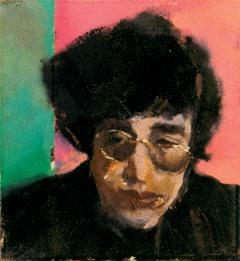
Keith Reid
Gary Brooker recalled the writing of the music in an interview with Uncut magazine February 2008: "I'd been listening to a lot of Classical music, and Jazz. Having played Rock and R&B for years, my vistas had opened up. When I met Keith, seeing his words, I thought, 'I'd like to write something to that.' They weren't obvious, but that doesn't matter. You don't have to know what he means, as long as you communicate an atmosphere. 'A Whiter Shade Of Pale' seemed to be about two people, a relationship even. It's a memory. There was a leaving, and a sadness about it. To get the soul of those lyrics across vocally, to make people feel that, was quite an accomplishment.”
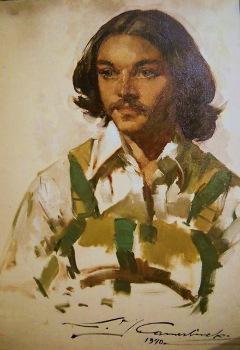
Gary Brooker
The main organ melody appears at the beginning and after each verse/chorus. But it is also heard throughout, playing variations of its theme and counterpointing the vocal line. The vocal and organ accompaniament reach a crescendo at the beginning of the chorus "And so it was, and later ..."; where the organist rapidly runs his finger down and up the entire keyboard. The final instrumental fades out to silence - a common device in pop music of the time.
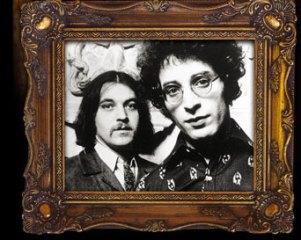
Gary Brooker & Keith Reid
The Hammond organ line of "A Whiter Shade of Pale" came from Johann Sebastian Bach's "Sleepers, Wake!" and "Air on the G String" - both of which use a similar stepwise bass motion. The vocal verses are yet more loosely based on that melody, though the lyrics are extremely obscure for a pop song. Obviously influenced by the free-association imagery of Bob Dylan, it did not necessarily but could have been impressions of a drug experience, and not a particularly good one, despite the soothing melody.
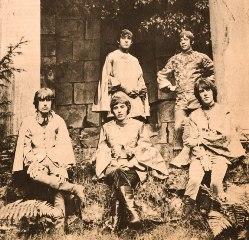
Procol Harum, 1967
The song was performed and recorded at Olympic Studios in London, England with Gary Brooker providing the vocals and piano, Matthew Fisher on a Hammond M-102 organ, David Knights on bass and Ray Royer on guitar. Drums were by session drummer Bill Eyden.
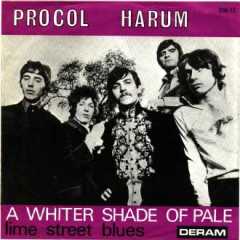
A Whiter Shade of Pale, Deram Records
With their 1967 debut single "A Whiter Shade of Pale," Procol Harum managed a remarkable feat attempted, but unattained, by many many rock groups: creating a classic and huge-selling record that genuinely did not sound like any previous rock recording. It also become something the band themselves couldn't hope to live up to in their ensuing career, although as it turns out they did quite nicely.

A Whiter Shade of Pale
The single was released on 12 May 1967 by Deram Records and entered the UK charts on 25 May. In two weeks it reached number one where it stayed for six weeks, and on the UK chart for a total of 15 weeks. A May 1972 re-release on Fly Records stayed in the UK charts for a total of 12 weeks, and reached number 13 as highest. In the US, it reached #5 and sold over 1,000,000 copies.
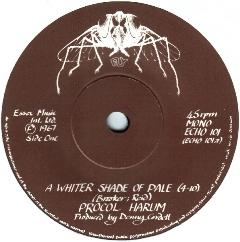
A Whiter Shade of Pale, Fly Records
It was the most played song in the last 75 years in public places in the UK (as of 2009), and the United Kingdom performing rights group Phonographic Performance Limited in 2004 recognised it as the most-played record by British broadcasting of the past 70 years. Also in 2004, Rolling Stone placed "A Whiter Shade of Pale" No. 57 on its list of the 500 Greatest Songs of All Time.
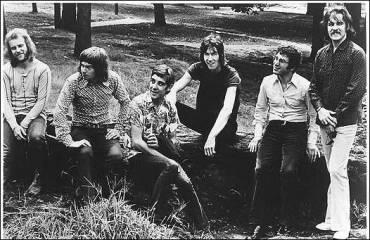
Procol Harum, 1971
One of the anthems of the 1967 Summer of Love, it is one of fewer than 30 singles to have sold 10 million (or more) copies worldwide.
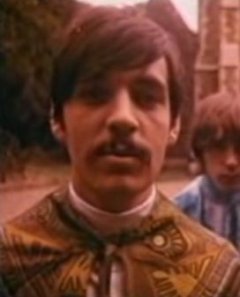
Gary Brooker
A Whiter Shade of Pale, lyrics by Keith Reid
We skipped the light fandango Turned cartwheels 'cross the floor I was feeling kinda seasick But the crowd called out for more The room was humming harder As the ceiling flew away When we called out for another drink And the waiter brought a tray And so it was that later As the miller told his tale That her face, at first just ghostly, Turned a whiter shade of pale She said, "There is no reason And the truth is plain to see." But I wandered through my playing cards And they would not let her be One of sixteen vestal virgins Who were leaving for the coast And although my eyes were open wide They might have just as well been closed And so it was that later As the miller told his tale That her face, at first just ghostly, Turned a whiter shade of pale She said, "I'm here on a shore leave," Though we were miles at sea. I pointed out this detail And forced her to agree, Saying, "You must be the mermaid Who took King Neptune for a ride." And she smiled at me so sweetly That my anger straightway died. And so it was that later As the miller told his tale That her face, at first just ghostly, Turned a whiter shade of pale If music be the food of love Then laughter is it's queen And likewise if behind is in front Then dirt in truth is clean My mouth by then like cardboard Seemed to slip straight through my head So we crash-dived straightway quickly And attacked the ocean bed And so it was that later As the miller told his tale That her face, at first just ghostly, Turned a whiter shade of pale
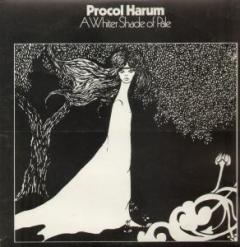
A Whiter Shade of Pale, album








